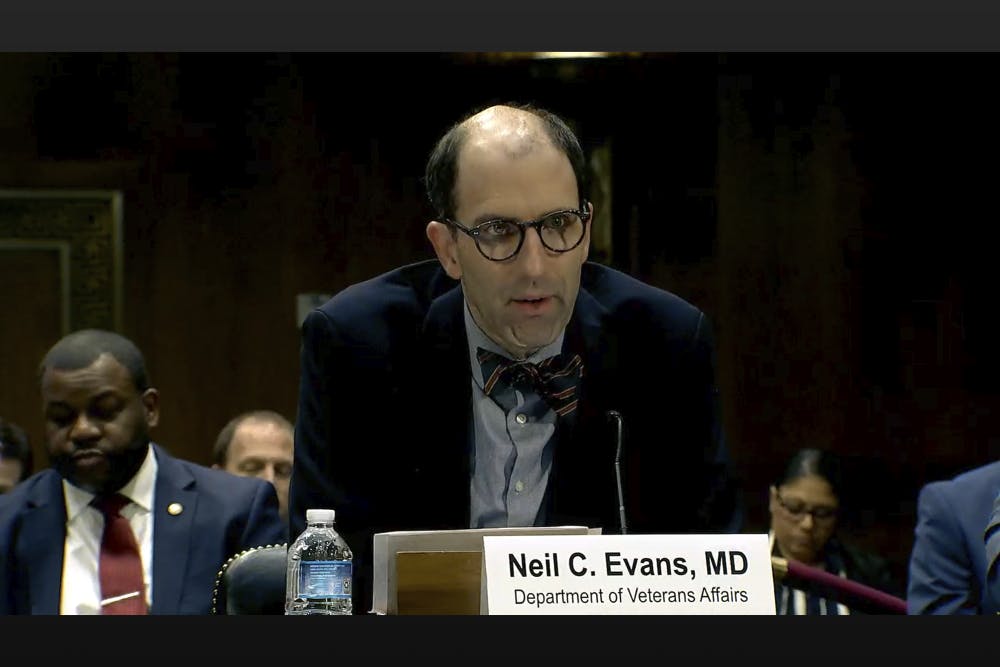Implementation, Not Just Tech, Disrupts Federal Health IT, Officials Say
The real potential for change is in meaningful implementation of new technologies.

Disruptive technologies are well known to be transforming the federal health IT landscape, but the implementation of and change management behind those technologies are just as game-changing, according to several federal officials.
“Technology itself is not disruptive. It is the application of technology to impact people’s lives that actually matters,” said Dr. Neil Evans, Veterans Health Agency Connected Care Officer, at the FedHealthIT 100 event Monday. Technologies like a new electronic health record would be most disruptive if it was least disruptive, in that such a record would interrupt clinicians less often, he added.
Taking a human-centered design approach — spending time with providers to understand what their needs are and how technology can support their work and beneficiaries’ care — is critical.
“The heart of health care is ultimately a relationship,” Evans said. “What technology is allowing us to do and how technology has been disruptive in the delivery of health care is that it’s allowing health care to be delivered in new settings and new ways that weren’t supported when you had to have a face-to-face visit.”
Evans added that since technologies like telehealth and connected care have allowed for greater access to health care in organizations like the Department of Veterans Affairs, therefore extending the patient-provider relationship that beneficiaries want from health care facilities to remote locations. The success behind telehealth, he said, is not in the technology itself, but the way it transforms how people interact with their providers in positive ways.
Completing successful projects like the seamless electronic health record between VA and the Defense Health Agency will be disruptive less in how beneficiaries and providers need to interact with records and more in how receiving and providing care will become an easier process.
“When you make the record about the patient and not where the care is delivered, you can access it from any point in time,” said DHA Defense Healthcare Management Systems Deputy Program Executive Officer Holly Joers. “When you talk about world care or telehealth, that all gets pulled back and can be accessed from anywhere, updated from anywhere.”
In handling the data that agencies collect in its electronic health records and creating AI solutions to manage data, Department of Health and Human Services Office of Inspector General Chief Data Officer Caryl Bryzmialkiewicz said that agencies need to consider what algorithms they will apply to data, as well as whether those algorithms will be used appropriately and provide insights and feedback. Officials need to prevent against algorithmic bias in applying AI so that AI transforms the health IT landscape in a positive, rather than harmful, ways, she added.
Industry partners have a place in these efforts, as they can be disruptive in how they design and sell their products and services to agencies. Baking in cybersecurity from the start, for example, will be most impactful for industry to help bring in technological transformation in federal health IT, echoed both Joers and VA Chief Technology Officer of Electronic Health Record Modernization John Short.
“We need to be able to take advantage of the technological solutions that are being brought to bear for clinicians, but we can’t avoid the data protection,” Joers said. “We can’t make that data vulnerable.”
Connected devices are the biggest vulnerability at any medical institution.
“Those ‘internet of things’ devices — they’re ‘scary of things’ devices,’” Short said. “Please [bake the] cyber in there, and that way your innovation gets used sooner.”
This is a carousel with manually rotating slides. Use Next and Previous buttons to navigate or jump to a slide with the slide dots
-

DOD Cyber Strategy to Adapt to New Budgets, Tech Innovation
Budgetary pressures spur innovation as department tackles aging infrastructure and evolving threats, says top cyber official.
4m read -

Federal Agencies Tout Tech in President Trump’s First 100 Days
Defense modernization and health care restructuring landed among some of the key IT highlights within the president's first few months.
6m read -

VA Plans to Rollout Its EHR in 'Waves,' Program Chief Says
VA takes a new approach to its electronic health record deployment, following a proposed $2 billion White House funding boost.
4m read -

Federal AI Infrastructure Requires a Smarter Foundation
Federal AI depends on a smarter infrastructure, from managing environmental impacts to improving data quality and workforce readiness.
4m read








